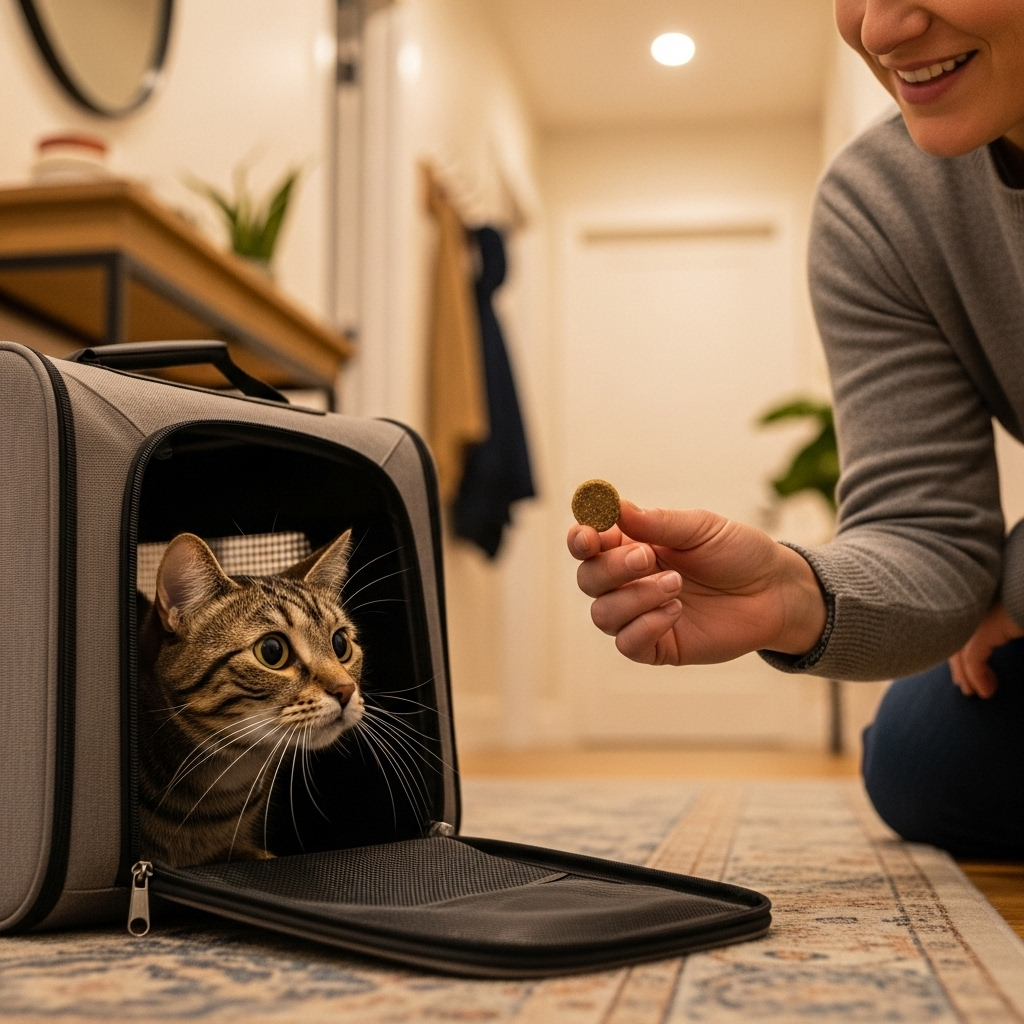Newly Adopted Cats: Probiotics During the Transition

Bringing a cat home from a shelter is an exciting, sensitive time. Many newly adopted cats experience stress-related gastrointestinal upset, reduced appetite, and changes in stool as they adapt to a new environment. Probiotics can be a useful tool for some cats during this transition, but they are not a cure-all. This article explains how probiotics work, when they may help, how to choose and use them safely, and what signs mean you should contact your veterinarian.
Why shelter-to-home transitions can affect a cat’s gut
Shelter environments often involve changes in diet, routine, and exposure to other animals and vaccinations — all of which can alter a cat’s gut microbiome and immune status. Common issues during and after adoption include:
- Stress-related diarrhea or soft stools
- Reduced appetite or picky eating
- Temporary changes in bowel movement frequency or odor
- Increased susceptibility to mild GI infections
Probiotics—live microorganisms intended to support the gut microbiome—can sometimes reduce the duration and severity of mild gastrointestinal upset and promote a healthier stool consistency. However, they are one part of a broader approach that includes consistent feeding, stress reduction, and veterinary care when needed.
How probiotics may help newly adopted cats
Potential benefits
- Support for normal intestinal flora and stool consistency
- Reduced duration of mild, stress-related diarrhea in some cats
- Support for the intestinal barrier and local immune responses
- Easier transition between diets when used alongside gradual diet changes
Limitations and realistic expectations
- Not all products work for every cat—individual response varies
- Probiotics do not replace veterinary diagnosis and treatment for infections, parasites, or severe illness
- Benefits often appear in days to a few weeks, not immediately
Choosing a probiotic for a newly adopted cat
When selecting a probiotic product, consider these factors:
- Veterinary formulation: Look for products made for cats or labeled for use in pets. These are more likely to contain strains studied in animals and to include appropriate doses and delivery forms.
- Strain transparency: Trusted products list the genus, species and strain (for example, Enterococcus faecium or Saccharomyces boulardii). Different strains have different effects.
- CFU information and expiration: The label should state colony-forming units (CFU) and ideally guarantee CFU through the expiration date, not only at manufacture.
- Form and ease of administration: Powders, sachets, capsules, chews, and soft treats are options. Pick one that you can reliably give to your cat.
- Storage: Check whether the product needs refrigeration or is shelf-stable and follow instructions exactly.
- Quality control: Choose brands with veterinary oversight or quality manufacturing practices.
Common probiotic strains used in cats
Some strains commonly found in feline probiotics include certain Lactobacillus, Bifidobacterium species, Enterococcus faecium, Bacillus species, and the yeast Saccharomyces boulardii. Evidence for each strain varies and benefits are often strain-specific. Discuss options with your veterinarian to choose a product suited to your cat’s needs.
How to give probiotics safely during the transition
- Introduce probiotics after consulting your veterinarian—especially if your cat is young, pregnant, nursing, or has health issues.
- Follow the product’s dosing instructions exactly. Do not double doses unless directed by your vet.
- Give probiotics at a consistent time each day. If your cat is on antibiotics, ask your vet whether and how to time the probiotic—often probiotics are given a few hours after antibiotics or continued after the course ends.
- Use probiotics as part of a transition plan that includes gradual diet changes (if needed), a quiet space with hiding spots, pheromone diffusers if recommended, and routine to reduce stress.
- Monitor stool, appetite, hydration, and behavior. If diarrhea is severe, prolonged (more than 48–72 hours), contains blood, or is accompanied by lethargy or vomiting, contact your veterinarian promptly.
Pros and Cons
| Pros | Cons |
|---|---|
| May shorten mild, stress-related diarrhea and improve stool consistency | Not effective for all cats; response varies |
| Generally safe for healthy cats and easy to give in palatable forms | Potential risks in severely ill or immunocompromised animals (consult a vet) |
| Can be used alongside other calming and environmental strategies | Product quality varies; some products lack clear strain or potency data |
Practical tips for a smooth transition (probiotics plus environment)
- Keep the cat’s area quiet and predictable for the first days to weeks.
- Provide familiar-scented items if possible (a blanket or toy from the shelter can help).
- Feed the same diet the cat had at the shelter for a few days, then transition slowly over 7–10 days if you plan to change food.
- Offer hiding spots, vertical space, and play sessions to reduce stress and encourage normal appetite and elimination.
- Keep fresh water accessible and monitor intake—dehydration with diarrhea needs prompt veterinary care.
Short FAQ
Q: Should I start probiotics immediately after adoption?
A: You can consider probiotics early in the transition, but it’s best to discuss the choice with your veterinarian—especially if your cat has health concerns or is on medication.Q: Can I use human probiotics for my cat?
A: Some human products may be safe, but they are not optimized for cats. Use veterinary-formulated products when possible and consult your veterinarian before using human supplements.Q: How long before I see an effect?
A: Some owners see improvements in a few days, but it can take 1–3 weeks for consistent benefits. If there’s no improvement or the condition worsens, contact your vet.Q: Are probiotics safe with antibiotics?
A: They can be used alongside antibiotics in many cases. Ask your veterinarian about timing; often probiotics are given a few hours after an antibiotic dose or continued after antibiotics end to help restore balance.
Key Takeaways
- Probiotics can be a helpful part of supporting gut health for some cats transitioning from a shelter to home.
- Choose veterinary-formulated products that list strains and guaranteed potency; follow dosing instructions and vet guidance.
- Probiotics are an adjunct to, not a replacement for, veterinary care—monitor your cat closely and seek help for severe or persistent symptoms.
- Combine probiotics with stress-reduction measures, consistent feeding, and a calm environment for the best results.
Disclaimer
This information is educational and not a substitute for veterinary advice. Always consult your veterinarian before starting any supplement, especially if your cat is young, pregnant, nursing, has chronic health conditions, is on medication, or shows severe symptoms. If your cat has prolonged diarrhea, vomiting, blood in the stool, lethargy, or reduced drinking, seek veterinary care promptly.

Leave a Reply